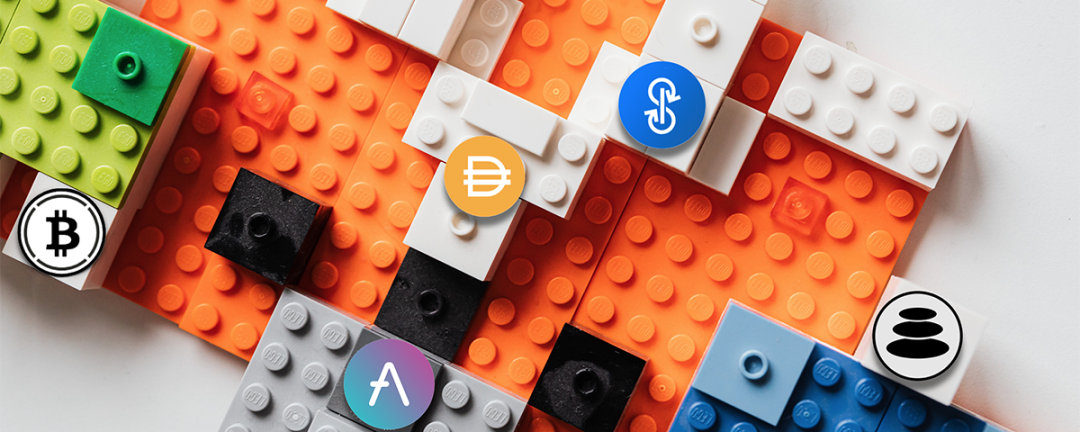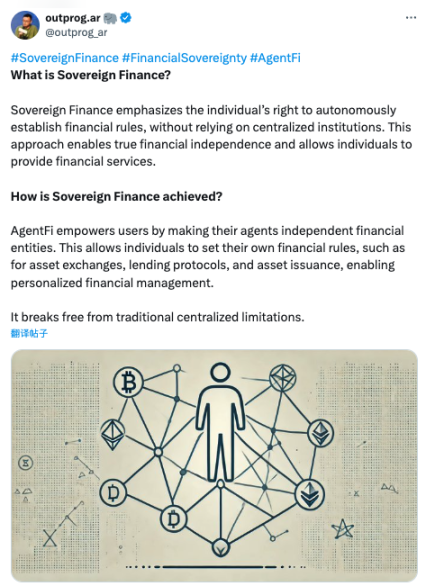New Form of DeFi: Self-Custody, Personalization, Peer-to-Peer.
Written by: 0xmiddle
In recent years, there have been many complaints in the Web3 space, with no more phenomenal innovations or new breakout effects; talent is returning to Web2 or shifting to AI; VC coins are facing crises, and memes have surprisingly taken center stage. We have long missed the excitement, shock, and anticipation we felt during the DeFi Summer and NFT Summer.
However, innovation is quietly happening all the time. At least in the DeFi space, I see ripples beneath the surface — the emergence of DeFi 4.0.
To understand what DeFi 4.0 is, let’s first outline the evolution of DeFi.
DeFi 1.0: Decentralization of Basic Financial Products
Time: Approximately 2018-2020
During this phase, early DeFi protocols such as MakerDAO, Compound, Uniswap, and Aave were born, achieving the decentralization of basic financial services like trading, lending, and asset management. The invention of AMM, in particular, created an unprecedented paradigm, sparking an egalitarian movement where "everyone can be a market maker," and generating a wave of wealth myths related to liquidity mining.
DeFi 2.0: Enhancing Capital Efficiency
Time: Approximately 2021-2022
During this period, a new batch of DeFi protocols emerged. Overall, these protocols lacked the elegant simplicity of the first-generation DeFi protocols and had more complex mechanisms, but their goals primarily revolved around enhancing capital efficiency, especially liquidity efficiency, while also attempting to address the issues of liquidity accessibility and sustainability.
Typical representatives include: Abracadabra, Alchemix, and Frax Finance, which attempted to bypass over-collateralization in lending protocols and stablecoin protocols through various mechanisms; Tokemak, which aimed to help newly launched DeFi projects gain liquidity as a service (LaaS); and OlympusDAO, which addressed liquidity sustainability through protocol-owned liquidity.
It is worth mentioning that Uniswap V3 was also born during this period, with its range-based market-making algorithm significantly improving LP capital efficiency compared to the previous full price range market-making.
Another significant innovation was the Gauge Voting mechanism of the Curve protocol, also known as the veToken governance mechanism, which is a token governance scheme that effectively realized liquidity sustainability. This mechanism was later widely adopted by many protocols in the DeFi industry.
DeFi 3.0: Expansion of Composability
Time: Approximately starting in 2022
There is still a lack of consensus in the industry regarding the definition of DeFi 3.0. Some believe it refers to LSDFi and Restake, others think it pertains to cross-chain or full-chain DeFi, and some consider it Farming as a Service. This reflects that during the 3.0 phase, DeFi saw innovations and progress in multiple areas. However, overall, the development trend of DeFi during this phase mainly manifested as an expansion of composability.
In the 1.0 era, the term "DeFi Lego" was already frequently mentioned and discussed, but its Lego-like composability was fully realized in the 3.0 era.

Image source: Internet
Since the Shanghai upgrade, Ethereum has officially completed its transition from PoW to PoS, and ETH LSD has become a fixed-income product similar to dollar bonds in the DeFi space. Against this backdrop, many protocols began developing Restake scenarios based on ETH LSD to provide users with stacked yields, with representative projects including Eigenlayer and Puffer; some protocols also offered interest rate swap products and diversified arbitrage strategies based on the yield-generating characteristics of LSD, such as Pendle.
With the improvement of infrastructure, the cost of creating chains has increased, leading to the emergence of numerous L2s and new public chains, which brought diversification but also fragmentation. Some DeFi protocols, empowered by underlying cross-chain protocols, attempted to create composability across different chains, allowing users to access funds, exchange assets, and participate in staking and lending across chains. Representative projects include the full-chain DEX Stargate, the full-chain lending protocol Radiant, and the full-chain LSD protocol Bifrost.
Due to the enhanced composability of DeFi, various "one fish, multiple eats" strategies emerged, and some protocols began offering FaaS (Farming as a Service) to users, providing automated strategies through smart contracts, simplifying user operations while offering multiple high-yield strategies, thus providing users with a "hands-free" earning service. Representative projects include Rari Protocol, Harvest Protocol, and Yearn Finance, which has traversed from the 1.0 era.
DeFi 4.0: Self-Custody and Personalized Finance
Time: Starting in 2023
Finally, we come to DeFi 4.0. Due to the performance limitations of Ethereum, DeFi protocols on Ethereum could not provide independent agent computing capabilities for each user, thus adopting a single contract management model. Whether it is Uniswap, Compound, or MakerDAO, as well as the vast majority of Ethereum DeFi protocols, users need to authorize their funds to the contract and perform unified configuration and management within the contract.
However, with the emergence of various L2s and high-performance new public chains, these performance limitations no longer exist. Yet, for a long time, the strong inertia of past paradigms has still been at play. In fact, for high-performance new public chains, DeFi can be constructed in a more advanced form.
In this new form of DeFi, each user can deploy their own smart contract agent to interact with protocols in a customized manner, independently conducting personalized financial activities.
The industry has yet to reach a unified naming for this new form. New lending protocols like Morpho, Ajna, and Euler Finance have created a new term called "modular lending." Extending this, we can derive a new concept — "modular DeFi"; the Arweave/AO ecosystem has popularized the term AgentFi, meaning "agent finance." A term I personally prefer is SovFi (Sovereign Finance), which emphasizes "individuals providing financial services" and "individual financial independence." This was first seen in a tweet by EverVision founder outprog, with Permaswap developed by EverVision being the leading DEX in the Arweave/AO ecosystem. The tweet mentioned that sovereign finance emphasizes "individuals providing financial services" and "individual financial independence." Intuitively, it means allowing everyone to establish their own exchange, create their own bank, and build any financial service.

Image source: https://x.com/outprog_ar/status/1853102029620805912
Regardless, as the industry develops and narratives emerge, consensus will inevitably coalesce around a certain name, so for now, let’s set aside the naming issue and refer to it as DeFi 4.0.
The core features of DeFi 4.0 are three:
First, self-control. Users do not need to authorize their assets to a unified contract but can manage their funds through a self-controlled agent contract and participate in financial activities;
Second, personalization and customization. Users can set the content and parameters of financial activities according to their needs.
Third, peer-to-peer. The trading model is no longer pool-to-pool but rather peer-to-peer, or point-to-network.
For example, Permaswap allows LPs to independently set market-making curves and ranges, executing trades with traders through a peer-to-peer matching mechanism. Users of so-called "modular lending" protocols can create their own lending pools, independently set over-collateralization rates and lending rates, and execute trades with borrowers through a peer-to-peer matching mechanism. It is worth mentioning that to avoid future interoperability issues with differently developed agent contracts, Permaswap has preemptively created a standard protocol — FusionFi Protocol. All agent contracts (Agents) built according to this standard can communicate with each other, facilitating mutual matching, which could enable Permaswap to transcend being merely a DEX and become a liquidity aggregator, even a super aggregator that integrates various financial forms.
Conclusion
New problems give rise to new solutions, and within those new solutions may lie new problems. Like the development of most things, DeFi continues to evolve through this ongoing process of negation of negation. Looking back at the journey from DeFi 1.0 to DeFi 3.0, we can see that the DeFi space has always been filled with vibrant creativity, with some innovations visibly bringing change, while others, though less noticed, may have equally profound impacts.
As we enter 2024, we vaguely discover new trends in the DeFi space — autonomy and personalization. We sense the emergence of a new decentralized financial paradigm — DeFi 4.0. It may not yet be widely promoted or fully formed, but 0xmiddle believes it will ultimately coalesce into a powerful narrative. The era of sovereign finance is about to arrive!
免责声明:本文章仅代表作者个人观点,不代表本平台的立场和观点。本文章仅供信息分享,不构成对任何人的任何投资建议。用户与作者之间的任何争议,与本平台无关。如网页中刊载的文章或图片涉及侵权,请提供相关的权利证明和身份证明发送邮件到support@aicoin.com,本平台相关工作人员将会进行核查。




